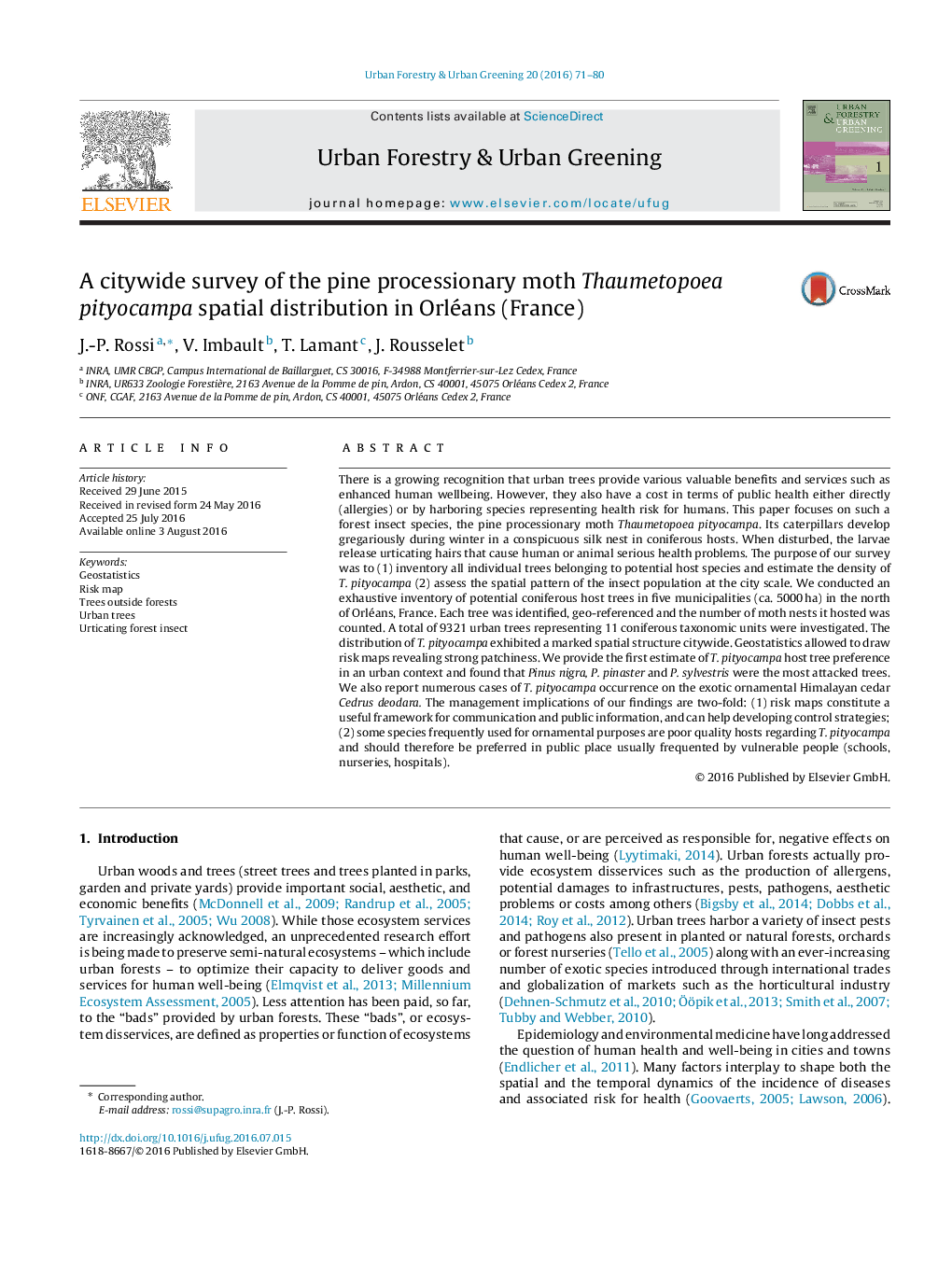| Article ID | Journal | Published Year | Pages | File Type |
|---|---|---|---|---|
| 6461885 | Urban Forestry & Urban Greening | 2016 | 10 Pages |
â¢The pine processionary moth, an urticating forest defoliator insect, is associated to various conifer species in the city of Orléans (France).â¢The spatial distribution of the insect is patchy with areas of high level of infestation.â¢Pinus nigra, P. pinaster and P. sylvestris are the most attacked tree species.â¢Trees used for ornamental purposes may be selected amongst species rarely attacked by the insect.
There is a growing recognition that urban trees provide various valuable benefits and services such as enhanced human wellbeing. However, they also have a cost in terms of public health either directly (allergies) or by harboring species representing health risk for humans. This paper focuses on such a forest insect species, the pine processionary moth Thaumetopoea pityocampa. Its caterpillars develop gregariously during winter in a conspicuous silk nest in coniferous hosts. When disturbed, the larvae release urticating hairs that cause human or animal serious health problems. The purpose of our survey was to (1) inventory all individual trees belonging to potential host species and estimate the density of T. pityocampa (2) assess the spatial pattern of the insect population at the city scale. We conducted an exhaustive inventory of potential coniferous host trees in five municipalities (ca. 5000Â ha) in the north of Orléans, France. Each tree was identified, geo-referenced and the number of moth nests it hosted was counted. A total of 9321 urban trees representing 11 coniferous taxonomic units were investigated. The distribution of T. pityocampa exhibited a marked spatial structure citywide. Geostatistics allowed to draw risk maps revealing strong patchiness. We provide the first estimate of T. pityocampa host tree preference in an urban context and found that Pinus nigra, P. pinaster and P. sylvestris were the most attacked trees. We also report numerous cases of T. pityocampa occurrence on the exotic ornamental Himalayan cedar Cedrus deodara. The management implications of our findings are two-fold: (1) risk maps constitute a useful framework for communication and public information, and can help developing control strategies; (2) some species frequently used for ornamental purposes are poor quality hosts regarding T. pityocampa and should therefore be preferred in public place usually frequented by vulnerable people (schools, nurseries, hospitals).
